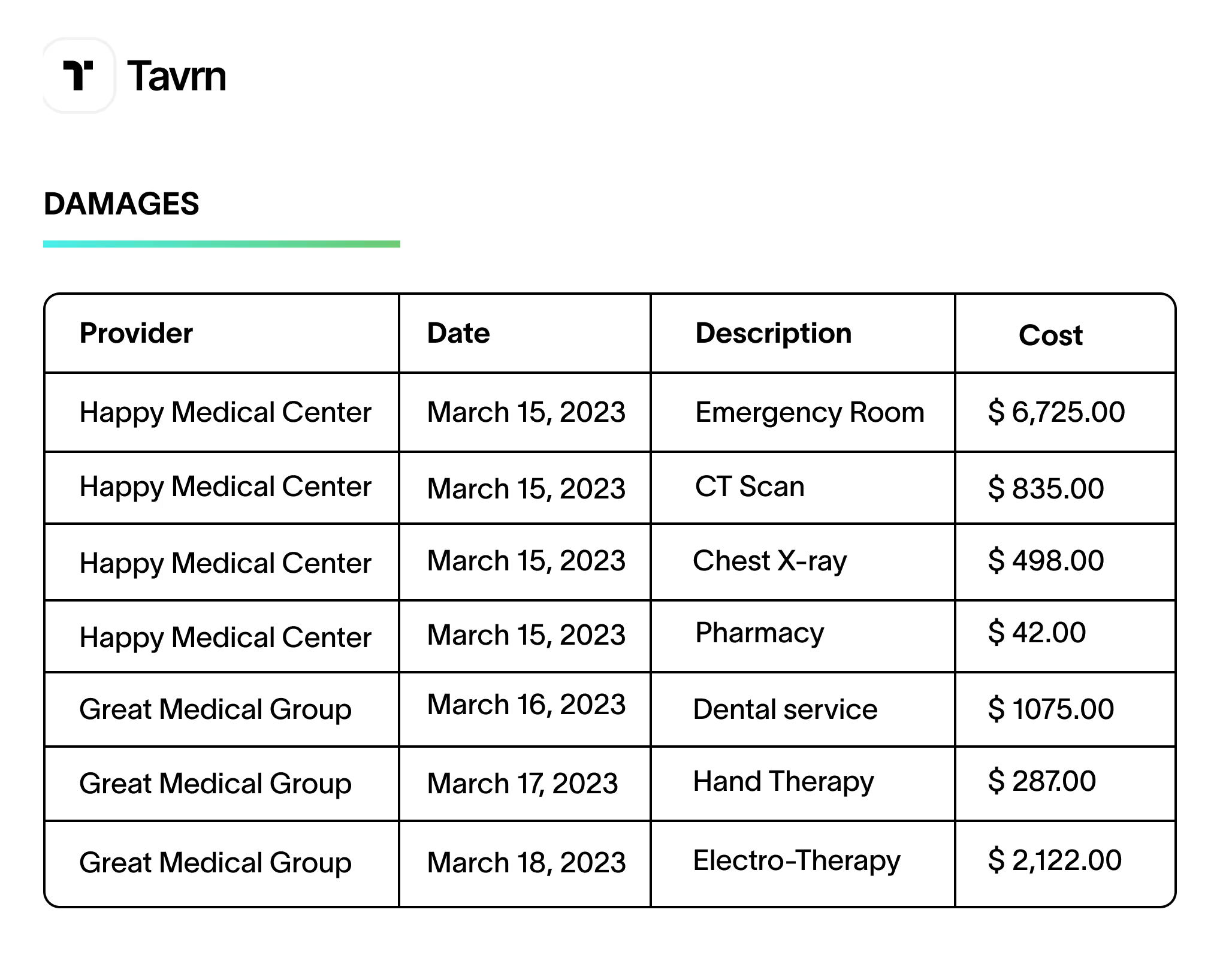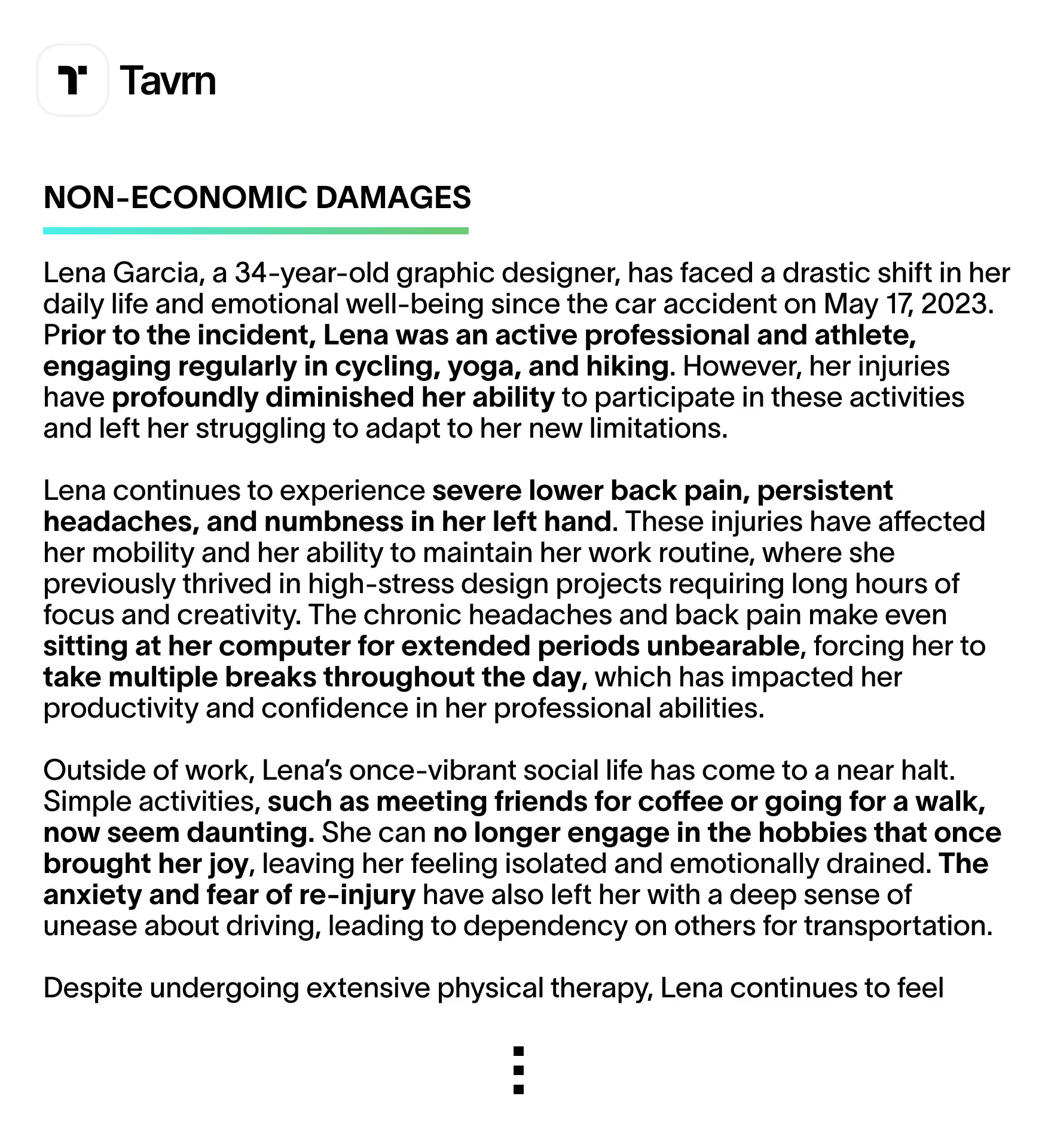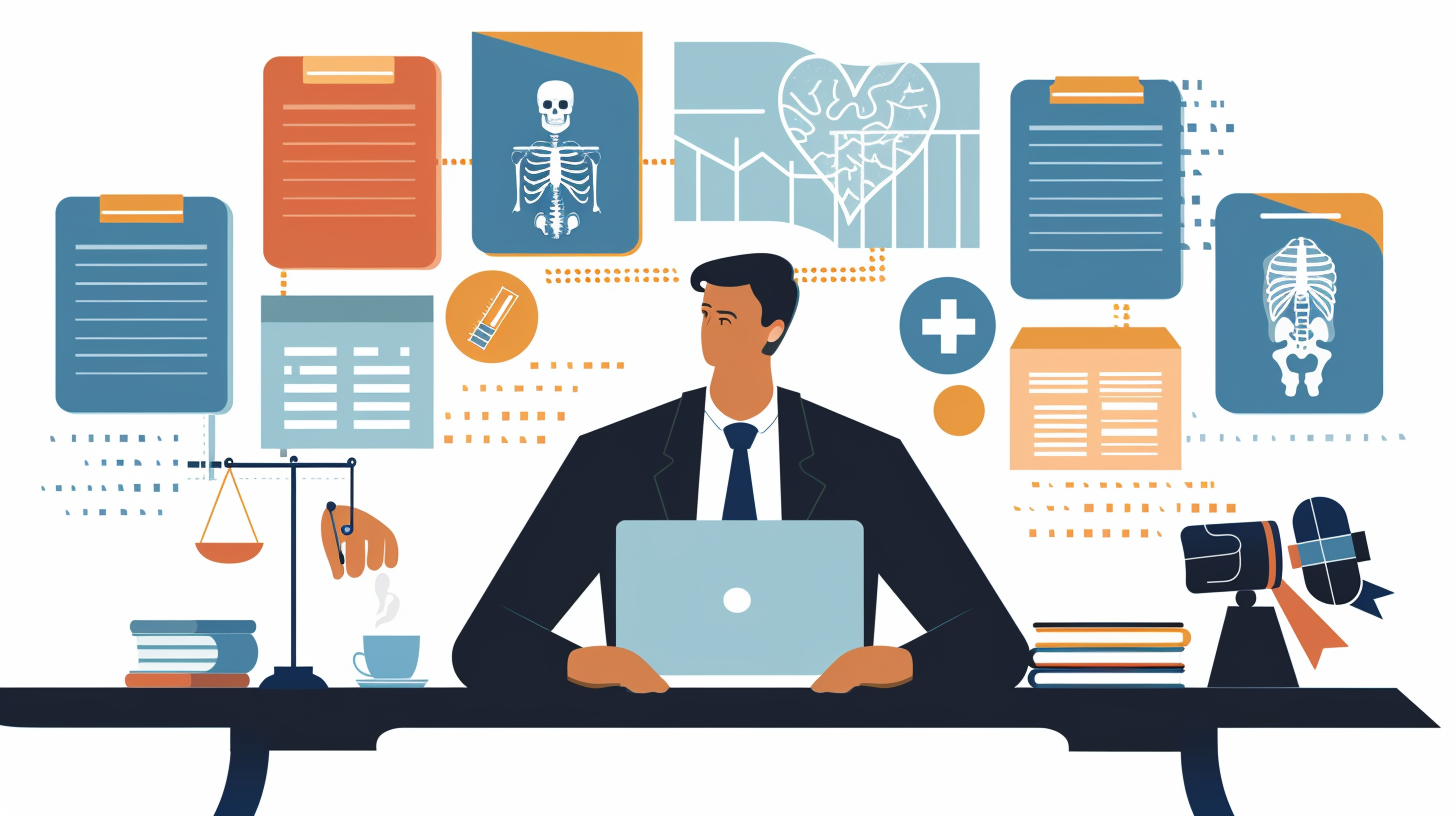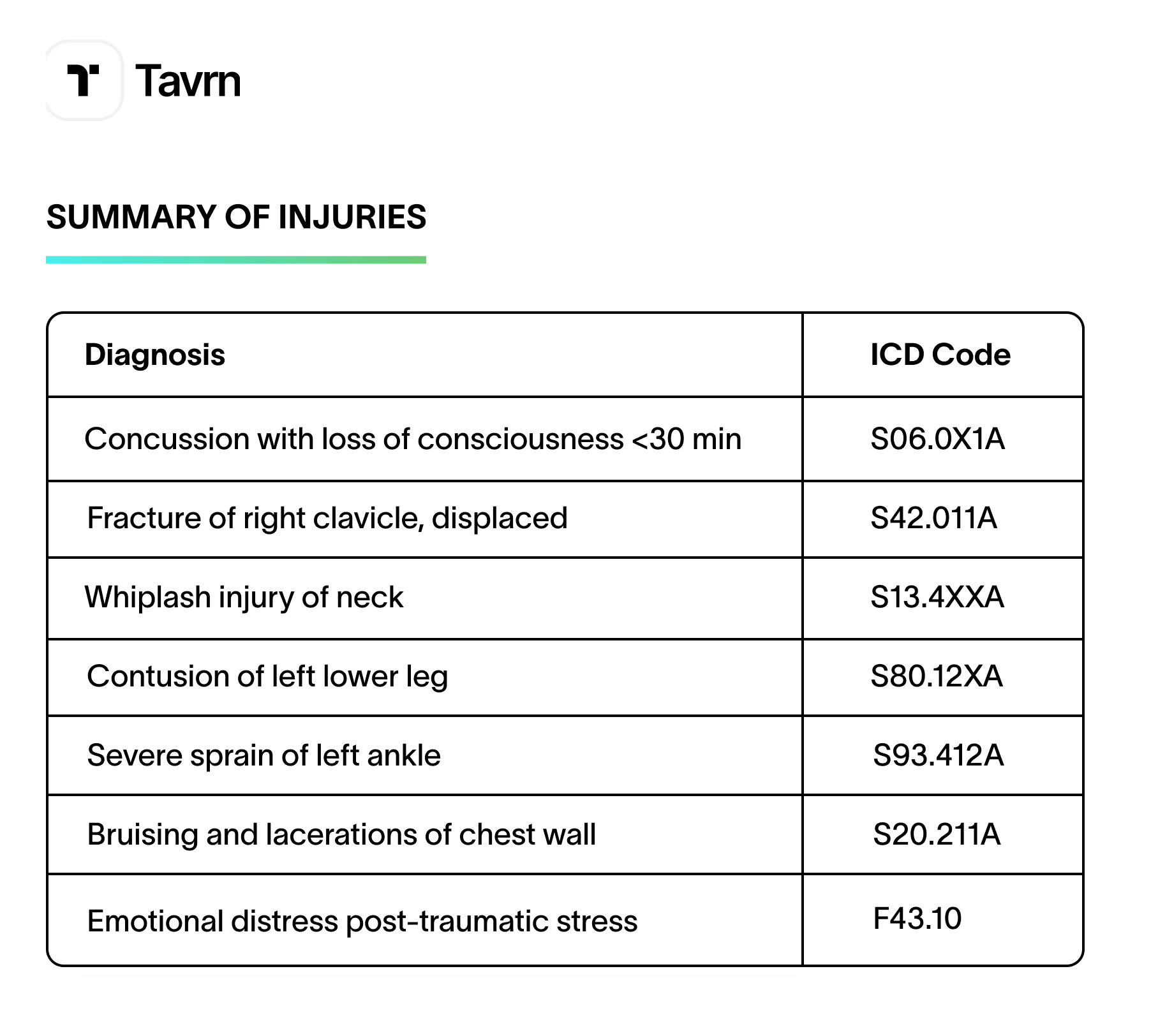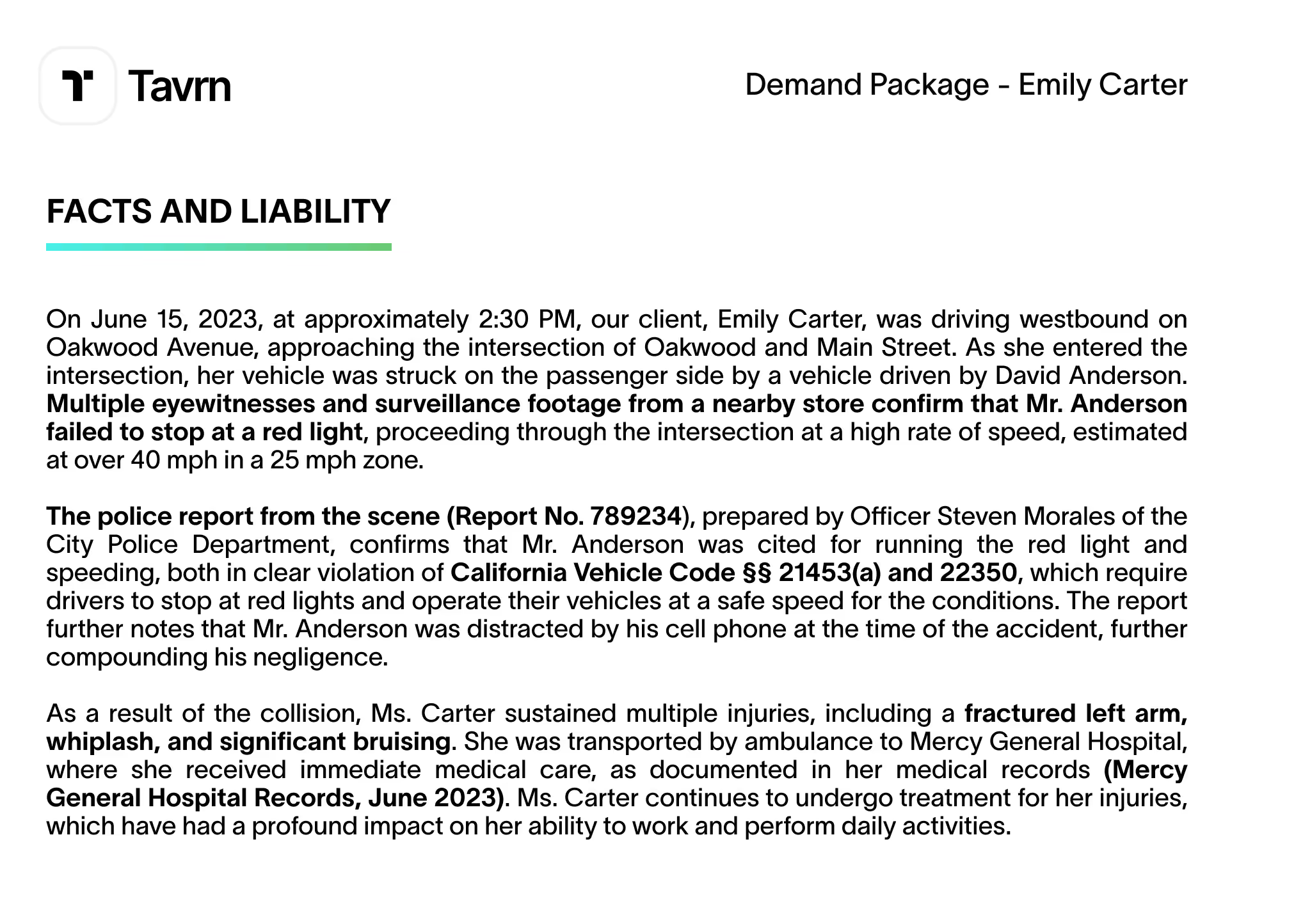Medical Summaries for Law Firms: How Attorneys Can Streamline Case Preparation
Successful legal outcomes depend on more than arguments—they require clear, well-documented medical evidence. In personal injury, medical malpractice, and workers’ compensation cases, medical records hold the key to proving liability and damages. But with thousands of pages filled with technical jargon, physician notes, and redundant entries, finding the most relevant details is an uphill battle.
Manually reviewing medical records drains time, increases costs, and risks missing critical facts that could shape the outcome of a case. That’s why medical summaries for law firms are essential. These structured reports condense complex medical histories into clear, actionable timelines that support legal strategy.
AI-powered medical record chronologies cut through the noise, instantly extracting and organizing key details. Instead of getting lost in documentation, legal teams get a case-ready summary that highlights critical injuries, treatments, and inconsistencies. This guide explores what makes an effective medical summary, best practices for structuring them, and how Tavrn’s AI-driven MedChrons give law firms the speed, accuracy, and efficiency they need to win cases.
Key Components of Medical Summaries
Medical records are dense, filled with jargon, repetitive entries, and scattered documentation that buries the most critical details. Chronological case summaries for law firms organize medical data into structured, digestible reports that enhance legal strategies and improve case efficiency. Without a well-organized summary, attorneys risk missing key evidence, weakening claims, and wasting valuable time sifting through irrelevant information.
An effective medical summary isn’t just a list of treatments—it’s a case-building tool that connects injuries to incidents, supports causation, and highlights legal red flags.
What a Medical Summary Needs to Cover
- Patient Info & Case Overview – The basics: name, DOB, injury, and case reference. Simple, but essential.
- Medical Timeline (Chronology) – Every key medical event in order, from the first reported symptoms to the latest treatments. This timeline isn’t just for reference—it’s ammunition for proving causation and tracking injury progression.
- Diagnostic Findings & Test Results – No one has time to sift through every lab report and scan. Summaries should extract only the crucial imaging results, lab work, and physician assessments that matter to the case.
- Treatments & Procedures – What happened, when, and why. A breakdown of surgeries, medications, hospital stays, and therapy sessions provides a roadmap for the medical journey.
- Physician & Facility Details – Who treated the patient? Which specialists weighed in? Summaries should list all treating doctors and hospitals, so attorneys know where to turn for verification, expert opinions, or cross-examinations.
- Prognosis & Future Medical Needs – Long-term consequences matter in settlement negotiations. A strong summary includes anticipated treatments, rehab plans, and expected medical costs to help attorneys justify compensation claims.
- Legal Red Flags & Missing Records – Gaps in treatment? Conflicting diagnoses? Inconsistencies that insurers will pounce on? A smart medical summary flags these issues upfront so attorneys can fix them before they become a problem.
Manually sorting medical records is a time sink—slow, tedious, and prone to errors. Tavrn’s AI-powered MedChrons handle the heavy lifting in minutes, extracting key details and structuring them into a clear, usable timeline. With advanced OCR, even handwritten and messy records don’t slip through the cracks. Attorneys get instant, case-ready summaries—no wasted hours, no missed evidence, just sharper legal strategies.
Tips to Prepare a Medical Records Summary
A strong medical summary isn’t just a list of treatments—it’s a strategic case document that tracks injuries, connects medical events to incidents, and highlights key findings. Whether preparing a case manually or using AI assistance, precision is critical.
Step 1: Gather and Verify Complete Medical Records
- Collect all relevant records, including physician notes, hospital discharge summaries, imaging reports, lab results, prescriptions, and physical therapy records.
- Cross-check for missing documents—gaps in care or missing diagnostic tests can be red flags in a case.
Step 2: Sort and Organize Records Chronologically
- Arrange documents by date of service rather than by provider, ensuring a clear, uninterrupted medical narrative.
- Create a structured timeline of medical events, from the initial injury or condition onset to the most recent treatment.
Step 3: Identify and Summarize Key Medical Findings
- Injuries and Diagnoses: Note all confirmed conditions, including their severity, location, and impact on daily activities.
- Diagnostic Test Results: Summarize X-rays, MRIs, CT scans, and lab tests, prioritizing abnormal findings that support the case.
- Treatments & Medications: Outline hospitalizations, surgeries, prescribed medications, and any physical therapy or rehabilitation.
Step 4: Eliminate Unnecessary Details and Medical Jargon
- Remove redundant entries such as repeated prescriptions or routine checkups unless they impact case strategy.
- Simplify medical language—instead of “posterior ligamentous complex disruption,” state “spinal ligament injury.”
Step 5: Flag Missing, Contradictory, or Inconsistent Data
- Look for gaps in care, conflicting physician opinions, or treatment delays that insurers may challenge.
- Highlight these discrepancies so attorneys can address them proactively.
Step 6: Review for Accuracy and Final Formatting
- Ensure all dates match up—discrepancies between physician reports and test results can be problematic.
- Format the summary so it’s easy to scan—use bullet points, tables, and clear section headers.
Step 7: Use AI to Automate the Process
- Instead of manually combing through hundreds of pages, AI-powered tools like Tavrn MedChrons extract key data, structure it into a legal-friendly format, and flag inconsistencies automatically.
- Tavrn’s OCR technology scans handwritten and poorly formatted documents, ensuring critical details aren’t overlooked.
A precise, well-organized medical summary strengthens legal arguments, speeds up negotiations, and ensures attorneys don’t miss critical evidence—without the inefficiencies of manual review.
How AI-Powered Medical Chronologies Can Save You Time and Money
Manual medical record review is slow, costly, and prone to errors. Attorneys need fast, accurate, structured medical summaries to build strong cases without wasting hours on document review. Tavrn’s AI-powered MedChrons streamline medical summaries for law firms, ensuring every critical detail is extracted, organized, and ready for legal action.
- Time Savings – AI processes thousands of pages in minutes, eliminating the need for manual sorting and allowing attorneys to focus on strategy instead of paperwork.
- Cost Reduction – Traditional medical summaries require expensive paralegal or medical expert hours—Tavrn’s AI-driven process reduces costs by up to 90%, making high-quality medical chronologies more affordable.
- Improved Accuracy – Human error in summarizing medical records can lead to missed injuries, incorrect treatment dates, or inconsistent timelines. Tavrn’s AI cross-references extracted data with original records, ensuring accuracy and consistency.
- Enhanced Case Efficiency – A structured, chronological record of injuries, treatments, and diagnoses gives attorneys the upper hand in settlement negotiations and litigation. AI-powered summaries help accelerate case progression and improve legal positioning.
- Customizable & Searchable Summaries – AI-generated MedChrons allow keyword searches, date filtering, and easy modifications, giving attorneys instant access to the most relevant medical details without manually scanning records.
- OCR for Complex Records – Poorly formatted, handwritten, or disorganized medical records no longer slow case preparation. Tavrn’s advanced OCR technology extracts key information from difficult-to-read documents, ensuring every critical fact is captured.
Attorneys don’t have time to sift through stacks of unstructured medical records. Tavrn equips law firms with fast, structured medical summaries, cutting prep time and ensuring airtight case documentation—all within 24 hours. Ditch manual reviews—let AI handle the heavy lifting.
Effortlessly Manage Medical Record Summaries with Tavrn
Disorganized medical records stall cases, weaken arguments, and drain time that could be spent on legal strategy. Attorneys need structured, reliable documentation to prove liability and justify damages, but manual review is a costly, error-prone grind. Medical summaries for law firms should streamline case preparation—not slow it down.
Tavrn’s AI-powered MedChrons transform raw medical data into a precise, chronological timeline in minutes. No more overlooked injuries, missing treatments, or wasted hours sorting through cluttered files. With instant access to well-structured case summaries, attorneys can build stronger arguments, negotiate faster settlements, and eliminate last-minute surprises in court.
Why let medical records become a bottleneck? Tavrn delivers organized, case-ready documentation in as little as 24 hours, turning complexity into clarity. See how AI-powered medical record chronologies can accelerate your firm’s case preparation today.
Settle quicker and for more with Tavrn's AI-powered products now.
